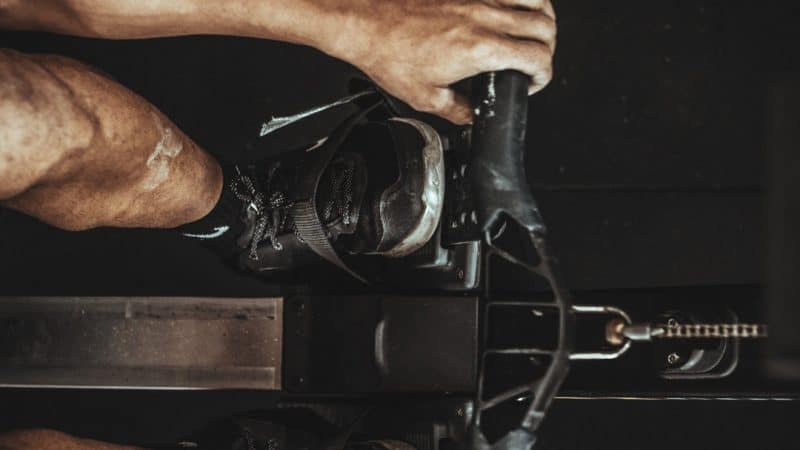Cardio For Weight Loss: 6 Crucial Facts To Keep In Mind
Cardio For Weight Loss: 6 Crucial Facts To Keep In Mind
If you’re just establishing your exercise routine, here are some crucial facts about cardio for weight loss. Keep them in mind when developing your routine.
If you immediately turned to cardio when you started trying to lose weight, you’re not alone. When it comes to weight loss, it seems like most people associate the treadmill or the track with their path to a smaller waistline.
Cardio is definitely an important part of any workout routine, but there are some important things to keep in mind if you want to use cardio for weight loss. You have to make sure that you plan your workouts effectively to get the maximum benefit.
When you’re developing your routine, keep these six crucial facts in mind. They’ll help you get the results you want!
1. You Can’t Just Do Cardio
This first fact might seem like a weird choice to start off with. After all, isn’t the whole post about using cardio for weight loss?
Here’s the thing, though — if you want to lose weight in a healthy way, you can’t have a workout routine that’s 100% cardio. You’re going to need to incorporate strength training into your schedule if you really want to see results.
Strength training helps to build muscle mass, which will help you out down the line by speeding up your metabolism and burning additional fat. Basically, the more muscle you have, the more calories you’ll burn on a regular basis.
Great, right?
If you’re only doing cardio, on the other hand, you won’t just be burning fat — you’ll be burning muscle, too. The last thing you want to do is to burn what will help you lose weight.
If you really want to go all in for both your strength training and your cardio, we recommend putting those workouts on separate days. (Think cardio on Monday, strength training on Tuesday.) If you really want to do both on the same day, though, do your strength training before your cardio. Strength training uses more energy, so you’ll need to be at 100% before you start.
2. You Don’t Have To Stay In The Fat-Burning Zone
We’ve all fallen victim to that pesky little display on the treadmill, or checked our Fitbits religiously to make sure that we’re in the golden “fat burn” zone. What does that even mean, anyway?
It’s easy to believe that you won’t burn any fat unless your heart rate is in that magic zone. That’s not completely true, though.
The name for the zone is a little misleading. It’s not that you’ll only burn fat in that zone, it’s that a larger percentage of the calories burned comes from fat. You’ll still be burning fat in the cardio or peak zones.
What’s most important isn’t the percentage of burned calories that come from fat. If you’re going to pay attention to one of the numbers lighting up your screen, it should be total calories burned. The number of calories you burn is way more important when it comes to the big picture.
And speaking of the number of calories you burn…
3. You Don’t Have To Burn 500 Calories
We can understand where this number came from. It’s a nice, round number, it sounds like a lot, and people feel accomplished when they can say that they burned 500 calories over the course of their workouts.
What’s problematic, though, is when people think that they have to burn 500 calories for their workouts to have any effect. Depending on the type of workout you’re doing, your cardio workouts can burn fewer than 500 calories and still be great for you.
High-intensity interval training (HIIT), for example, is a series of high-intensity workouts done in short bursts. You might not burn 500 calories during your thirty-minute workout, but you’ll keep burning calories at a higher rate for hours after you leave the gym.
4. Your Workouts Don’t Need To Be Long
When you think of cardio, do you think of long runs that take a ton of time out of your day? There’s a common misconception that your cardio has to be long, slow and steady to mean anything.
Even if you don’t have an hour to spare for your workout, go for a HIIT workout instead. The quick workout will still get your heart rate up, burn calories, and give you the cardio training that you need.
People who swear by the treadmill can still get the benefit of a shorter workout. Doing shorter sessions at a higher intensity will help you get more out of your workout in less time.

5. You Should Snack Before Your Workout
There are lots of runners who enjoy waking up early in the morning and going for a run first thing. That’s a great way to start your day…as long as you eat something before you head out the door.
When you’re in a calorie-burning mindset, it’s easy to think that to burn more calories, you shouldn’t eat before you workout. If you don’t eat ahead of time, your body has to burn off the fat that’s already on your body for energy, right?
Nope, not for cardio. Your body needs something to fuel it, and it will turn to the carbs and fat in your muscles, not the fat in your fat cells.
We’re not saying to eat a full meal and then go for a run — just eat a light snack to give your body something to work with.
6. You Still Have To Eat Right
Speaking of eating, you still have to have a proper diet if you’re planning on using cardio to lose weight. Just running an extra mile every time you opt for a cookie instead of a carrot stick won’t really help you out.
If your diet is still poor, doing lots of cardio will only do so much. Nourish your body with the right foods for the workouts you’re doing. For example, you incorporate a lot of strength training into your routine, make sure you eat enough protein.
Cardio combined with eating well can help you sculpt your body into the shape you want to see.
Use Cardio For Weight Loss Effectively
If you keep these crucial facts about cardio for weight loss in mind, you’ll be able to see better results. Make the most of your workouts and use your cardio effectively. Your body will thank you.
Our 21 Day Body Transformation Challenge combines diet and exercise to transform your look. If you want to turn heads for the right reasons, find out more here.




Recent Comments